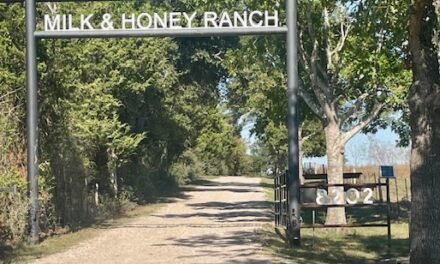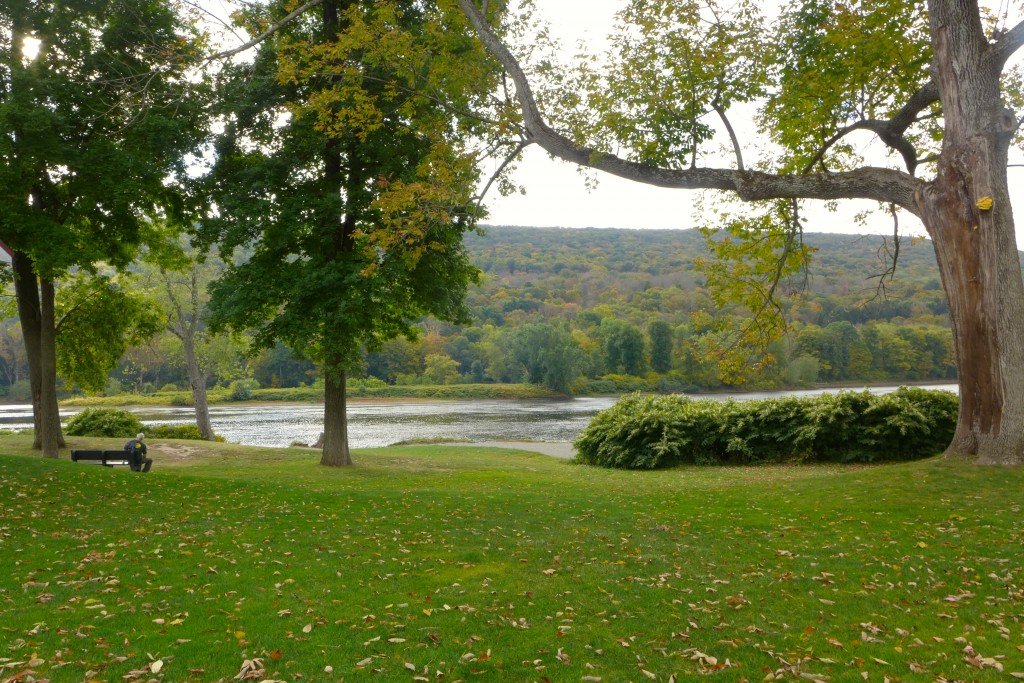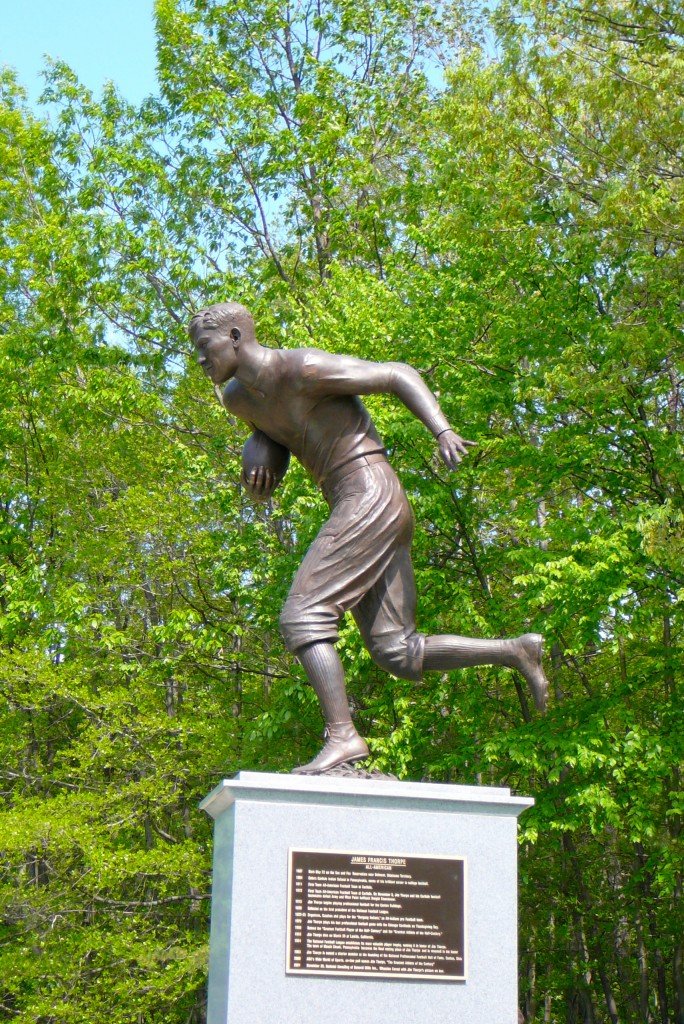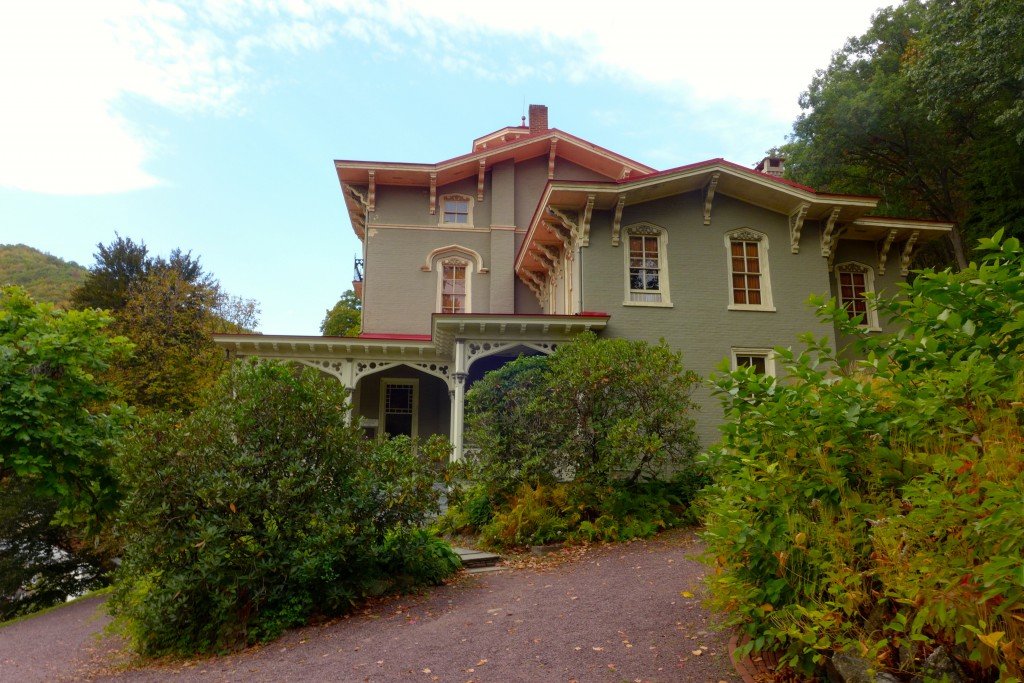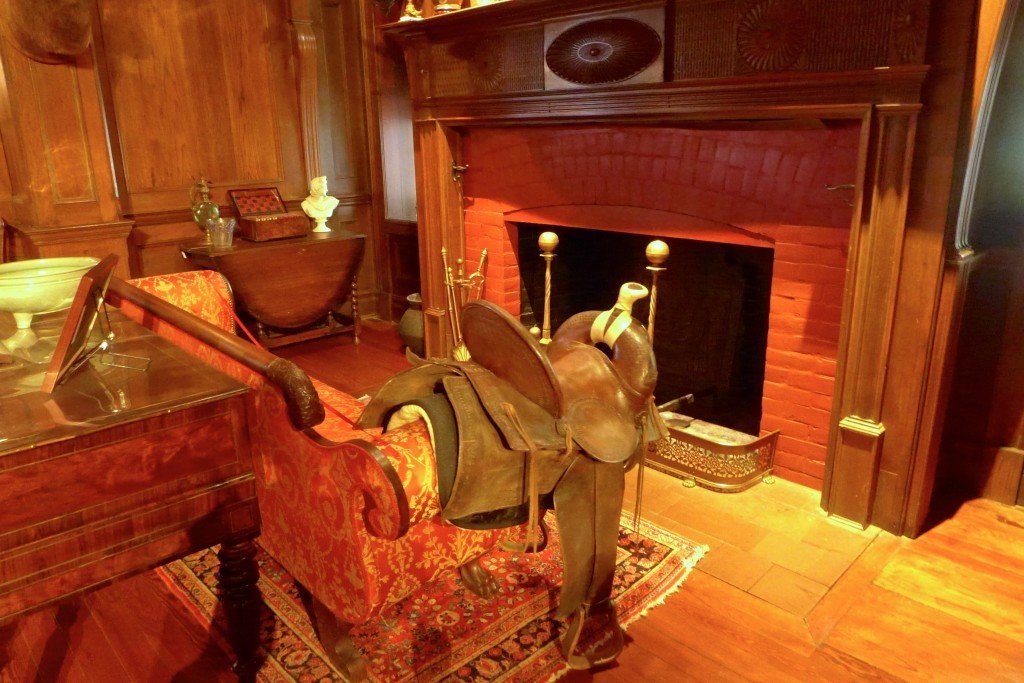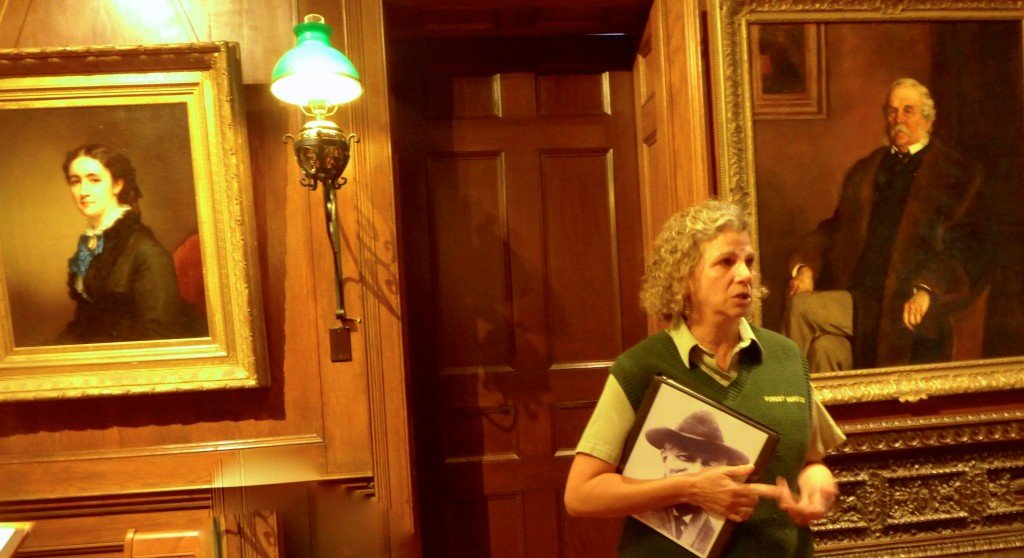
Three Not Well (Enough) Known Pocono Americans
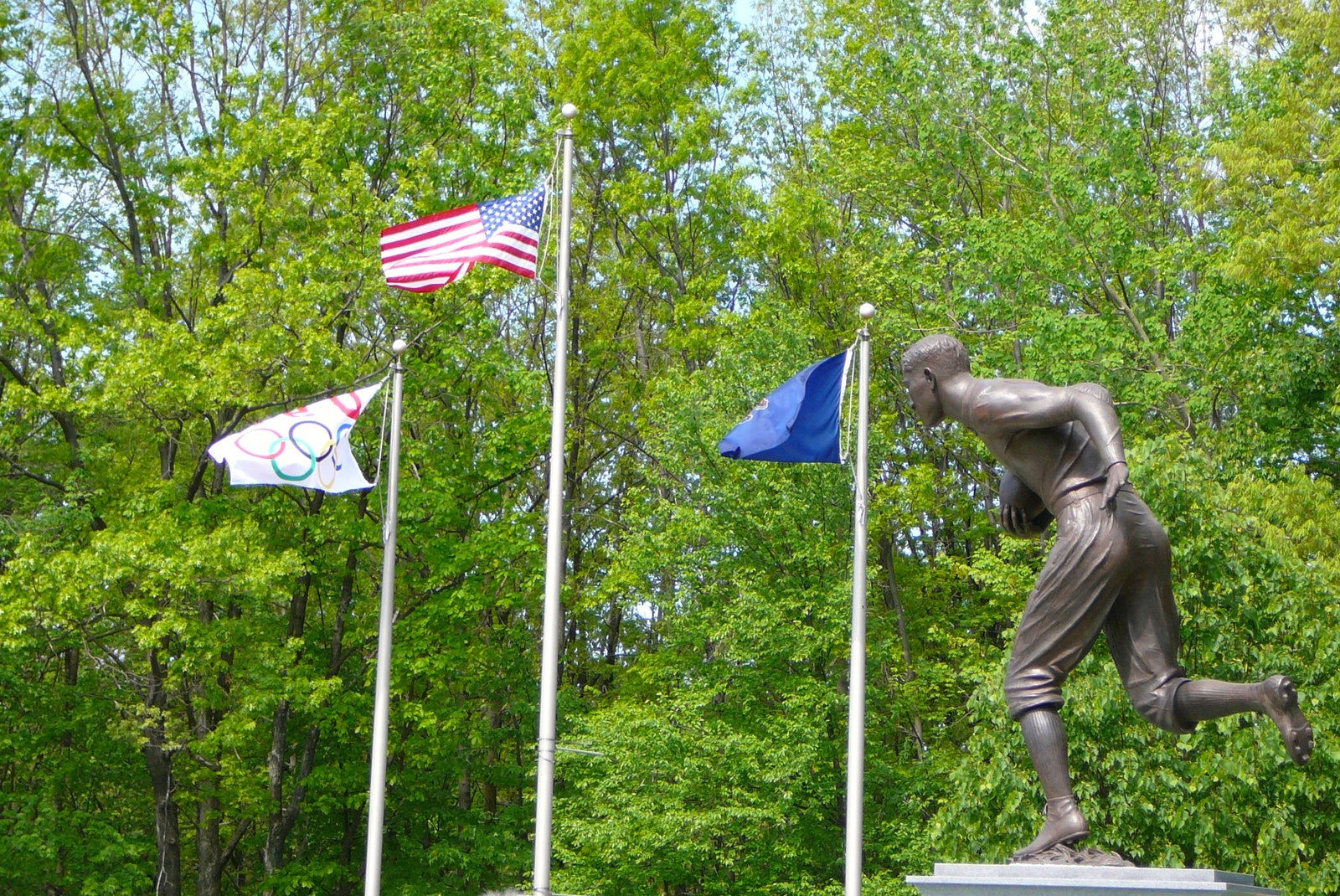
By Norman E. Hill Photos and Maralyn D. Hill
During our recent trip to the Pennsylvania Poconos, we had the opportunity to study three notable Americans. These three, although not household words, made significant accomplishments during their lives and deserve further acclaim. They are Jim Thorpe, Asa Packer, and Gifford Pinchot.
Jim Thorpe
Thorpe, born in Oklahoma in 1888, was 50% Caucasian and only 50% Native American. Both of his parents were half and half. But he always seemed to consider himself a Native American. On his own, he entered an Industrial School (probably a high school in Pennsylvania) and from there entered Carlisle College. He earned a reputation as an amazing all round athlete, proficient in track and field, football, baseball and even basketball. One year, he led his football team to the number one college rating, by virtue of an upset win over Harvard.
Thorpe’s records at the 1912 Olympics have never been equaled. He won both the pentathlon and decathlon events.
During his professional career, Thorpe played both semi-professional and wholly professional baseball and football. In football, he played with the New York Giants of the young NFL. He played six seasons of professional baseball, compiling a batting average around .322.
An ugly incident which may have involved racism clouded his life. It came to light that, before the 1912 Olympics, Thorpe had played several seasons of semi-professional baseball. He wrote to the Olympics President and did not deny this, although several other players in similar circumstances did. Although the complaint against him was made more than 30 days after the games had ended, and therefore should have been invalid, he was stripped of all his medals.
Thorpe experienced difficulty in earning a living after retiring from football at age 41, just at the start of the Great Depression. Alcoholism plagued him for much of his later life, until his death in 1953.
His widow was incensed that the state of Oklahoma would not prepare a memorial for him after his death. She turned to Pennsylvania, where his college fame was earned, and they were very receptive. Their bargain was that the town of Mauch Chunk would be renamed Jim Thorpe, and his remains would be moved there from Oklahoma.
Regaining Thorpe’s Olympic medals was more difficult and wasn’t achieved until 1983. At least throughout the 1950s, there was an almost fanatical determination to require “amateurism” in its most literal form. This was despite the fact that Communist participants in the games were full-time state employees, whose “professional” task was advancing Communist propaganda. Eventually, rules changed and players such as NBA and NHL stars started to represent the U.S. With this enlightened attitude, Jim Thorpe’s Olympic medals were finally returned to his widow.
Today, Jim Thorpe is regarded as one of the great all time athletes, perhaps the greatest ever.
Asa Packer
Another outstanding resident of Jim Thorpe, PA, before its name change, was Asa Packer. He started earning a living as a carpenter, and then switched to running coal boats on the Lehigh Canal. Soon, he and his brother started to build coal boats for canal shipping.
In 1846, Packer saw the future in railroads and announced plans to build one for hauling coal. By the 1850s, the railroad was viable and his Lehigh Valley Railroad started to haul coal on a large scale, from mines to cities and factories. By the time he died in 1879, his line across New Jersey and New York and included 650 miles of track.
During his lifetime and in his estate, Packer gave away about $30 million of his $54 million personal fortune. He founded Lehigh University in Bethlehem and endowed it with $500,000, an incredible sum at the time. He aimed that the Lehigh curriculum would combine business studies with liberal arts and theoretical economics topics. Today, Lehigh is one of the highest ranked universities in the U.S.
Packer enjoyed some political success, serving in the Pennsylvania legislature and representing the state for two terms in the U.S. Congress.
The Asa Packer mansion in the town of Jim Thorpe is considered an outstanding example of Victorian architecture. It is faithfully preserved, both inside and outside, and is considered one of the outstanding sites in the Poconos.
Although the epithet “Robber Baron” was freely tossed around in the late 1800s and early 20th century, I never heard it aimed at Asa Packer.
Gifford Pinchot
The father of Gifford Pinchot had acquired enough wealth in New York City to allow retiring, at least for summers, to Milford, Pennsylvania. There, he built a mansion reflecting extensive French influence. His oldest son, Gifford, was born in 1865.
The older Pinchot was very concerned about large scale forest destruction and resulting soil erosion throughout the U.S., a practice sometimes called indiscriminate “clear cutting.” He instilled this concern in his son, born in 1865. From then on, Gifford Pinchot worked tirelessly to promote scientific forestry and conservation of natural resources. One technique may be known as “thinning,” by which older trees are cut to make way for younger trees to thrive. Pinchot always stressed that a reasonably long time horizon in forestry management was more profitable than seemingly mindless cutting for the sake of cutting
In 1905, under sponsorship of President Theodore Roosevelt, he became head of the new United States Forest Service. Although part of the Department of the Interior, this new federal agency grew in size to control more than 170 million acres. Logging by private companies would be permitted, but on a strictly controlled fee basis that would preserve overall forest size. The so called thinning approach would be followed.
Pinchot thus did not advocate an eternal “state of nature”, untouched by human hands. This evidently led to debates with John Muir, another naturalist, who evidently did not believe that men were morally entitled to make any modifications of nature.
In 1910, Pinchot had a heated dispute with the Secretary of the Interior and President Taft, which led to his dismissal. When he was intensely backed by former President Roosevelt, his issues partially led to formation of the Bull Moose or Progressive Party, and Roosevelt’s split with the conventional Republicans.
The issues that Pinchot, with Roosevelt’s backing, raised seemed to involve:
- Roosevelt had an intense aversion to corporate size, as evidenced by his aggressive antitrust lawsuit against Standard Oil. Thus, he and Pinchot wanted lumber sales from government forests limited to small companies, not giant corporations. This seemed to hold, even if corporations were willing to follow Pinchot’s cutting regulations. Taft and Ballinger, Secretary of the Interior, were apparently willing to sell timber on a first come first come basis, under existing regulations.
- Taft was willing to allow coal mining exploration in the Alaska territory, where vast federal forests existed. Pinchot and Roosevelt were quite opposed to this.
Later, Pinchot reconciled with the Republican Party and served two separate terms as Governor of Pennsylvania. When his political career ended, in 1937, Pinchot toured some federal forests in western states. He was appalled to find that, earlier, a former protégé of his had become a form of religious fanatic and had allowed indiscriminate clear cutting in many forests. Denuding of land and resulting soil erosion were rampant. For the rest of his life, which ended in 1946, he spoke and wrote passionately with the aim of restoring his original approach to forestry.
Today, Grey Towers, the summer home of the Pinchot family, is preserved as part of the U.S. Forest Service.
In summary, Gifford Pinchot deserves credit for promoting public education on the advantages and necessity for maintaining long term time horizons in utilizing natural resources.
Photos of Jim Thorpe Memorial are Courtesy of Pocono Mountains Visitors Bureau

